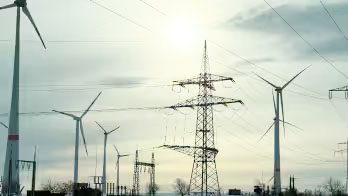NEW DELHI, June 24
With the surge in population, economic growth and increasing urbanisation and industrialization, the country’s electricity demand has skyrocketed. In 2023, the country’s peak power demand reached a record high of 243 GW. The Central Electricity Authority expects this number to grow by 7% year-on-year, potentially soaring to 260 GW. For context, the peak demand in 2014 was just 136 GW.
The Ministry of Power has projected that peak demand in June will reach 240 GW during the day and 235 GW in the evening. Incidentally, on May 25, peak demand reached 240 GW, the highest recorded this year, according to the Central Electricity Authority (CEA).
In this critical situation, thermal power generation saw a significant rise, with a 10.87 percent year-on-year increase, producing 123.50 billion units. However, this output still fell short of the month’s target of 161.71 billion units.
For decades, India has grappled with approximately 24 gigawatts of gas-based power plants lying idle or underutilized due to fuel shortages. However, in an unprecedented move in April this year, the government activated an emergency clause mandating companies to operate these dormant gas-based power plants by importing fuel. With the escalating demand for electricity, the necessity for a reliable, flexible, and environmentally friendly power source becomes paramount. While the country is making strides towards deploying record renewable energy (RE) capacities, these sources suffer from an inherent property of intermittency and unreliability. In this scenario, gas-based power plants emerge as a viable solution. They offer the flexibility to quickly ramp up or down in response to fluctuations in demand, thereby complementing these intermittent RE sources.
With about 20 GW of gas-based capacity is already available and awaiting utilization, these plants present an ideal solution for integrating renewable energy into the grid. They combine environmental friendliness with the ability to adjust output rapidly, unlike other alternatives that are either costlier, like battery storage systems, or environmentally unfriendly, like coal. This ensures grid stability and reliability even during periods of low renewable generation and high electricity demand.
Furthermore, with the recent downturn in LNG prices the LNG markets are stabilizing with landed price in India falling below the 10$ mark. Analysts predict that the market could enter an oversupply period in 2026 primarily because of a surge in supply from the US and the Middle East, beginning in 2025. Current global gas production is around 400 mtpa, with additional capacities of about 200 mtpa being created in Qatar and the USA over the next 2-3 years, increasing production by almost 50%. The “lower for longer” LNG prices, coupled with rising power demand, create a favourable environment for promoting the use of gas-based power plants in India.
While only 16GW gas based capacity is connected to gas grid, some of these idle plants have gone to National Company Law Tribunal (NCLT) and are available at throw-away prices. At the same time, India is adding significant new capacities. Large variable RE producers (solar and wind) need fast-ramping capacities to manage intermittency and meet long peak-hour demand. Although battery storage is an option, it is economical only for short-term (2-4 hour) storage and two-cycle operations.
With the softening of LNG prices to mid-single digits ($3-6/MMBtu), it is worthwhile to revive these idle capacities. Major RE companies can purchase these gas-based plants to manage intermittency and provide round-the-clock firm power supplies.
Interestingly, in addition to conventional natural gas, these gas-based power plants can also be made operational with biomethane, an increasingly prominent energy source in India that is expected to become price competitive at a large scale.
In light of these developments, the symbiotic relationship between gas and power is becoming increasingly evident. To fully harness the potential of gas-based power plants, innovative and friction-less solutions are needed. One such solution can be could be the introduction of coupled gas-plus-power contracts at the gas and power exchanges. This approach would streamline the integration of gas and power markets, maximizing efficiency and reliability in meeting energy demands.
Gas-based power plants rely on a steady and cost-effective supply of natural gas to operate efficiently. Traditionally, these plants have secured their fuel needs through long-term contracts with gas suppliers. However, this approach lacks flexibility and often exposes power producers to market volatility and supply disruptions. In contrast, coupling gas procurement with power trading at exchanges offers a more dynamic and responsive mechanism to manage gas procurement costs and optimize operations.
By aligning gas procurement with power generation, producers can better manage their exposure to market risks and ensure stable revenue streams. This strategy enhances the financial viability of these stranded plants and incentivizes investment in this idle infrastructure.
However, to make this solution successful, it is essential to remove all frictions hindering such operations.
First, there should be a provision for gas pipeline capacity booking on an intraday and day ahead basis. This process should be enabled through a transparent and online process with near real-time information flow. Second, gas pipeline operators shall provision for sharing of information related to capacity availability with the gas exchanges for the gas exchange to successfully clear these trades. By consolidating gas and power transactions within a unified marketplace, coupled contracts will foster competition, enhance market efficiency, and drive down costs for consumers. To ensure the success of coupled gas-plus-power contracts, collaboration between stakeholders in gas and power, regulatory bodies, and gas and power exchanges is essential. Additionally, the aforementioned frictions must be addressed to support the seamless execution of coupled transactions.



























